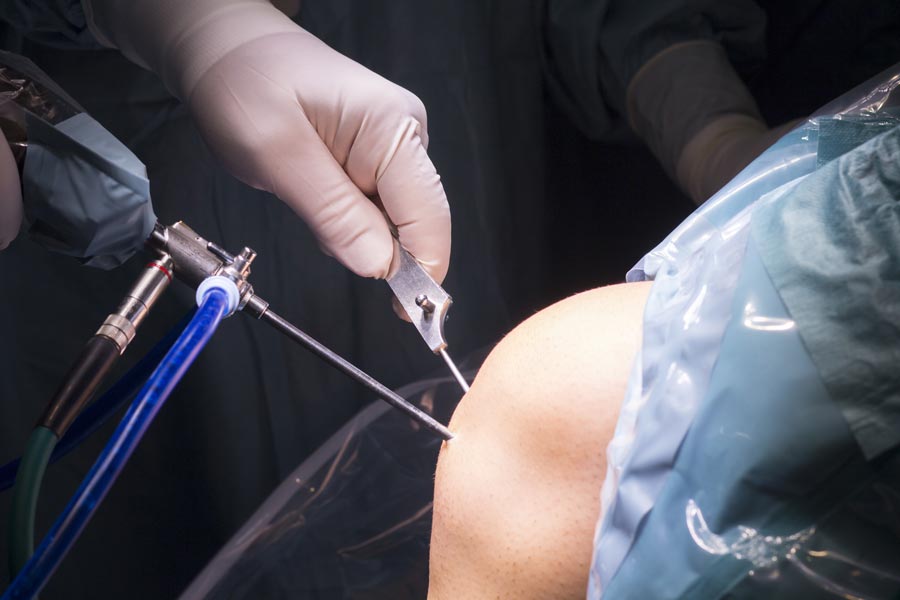Lateral Retinacular Release
A tug-of-war continues until the equal pull is ended by either of the teams. Such equal force between tissues around your kneecap (patella) helps balance it in the center of the knee. It is positioned in front of the knee on the femur (thigh bone). It glides centrally within the groove in the lower end of the thigh bone as you bend your knee.
Sometimes, the kneecap may tilt towards the outside (laterally) of the knee due to the tightening of a tissue known as the lateral retinaculum. This obstructs the movement of the kneecap within the groove, creating pressure on the joint that results in cartilage irritation and pain.
What is lateral retinacular release?
The lateral retinal release is a surgical procedure to realign your kneecap. During the procedure, the tightened ligaments on the outside of the knee are partially cut. This helps to loosen the pull towards the outside which helps to realign your kneecap into its groove, thereby restoring its normal alignment. It is usually performed as a minimally invasive surgery to minimize complications.

What are the indications for lateral release?
The primary indication for lateral retinacular release is the lateral tilt of the patella. It is also used to treat:
- Patellar subluxation (partial dislocation)
- Nonspecific anterior pain
- Tight lateral retinaculum
- Patellar dislocations
However, the success of treatment depends on patient selection. In the majority of cases, the tight retinaculum can be successfully treated with nonsurgical treatment options. Hence, surgical release of the lateral retinaculum should be considered when nonsurgical interventions such as physical therapy, bracing, medications, and activity modifications fail to relieve symptoms.
How is a lateral retinacular release done?
The lateral retinal release is an arthroscopic surgery that is performed through small incisions around the knee.
Pre-procedural care
- Notify your physician regarding all the medications you are taking.
- Avoid smoking at least a week before your surgery in order to reduce your risk for infections.
- Follow the instructions carefully, such as to avoid eating or drinking a night before the surgery
- Arrange someone to drive you home after completing the procedures
On the day of surgery
- Remove your jewelry or any other accessories.
- You may wear a hospital gown.
During the procedure
- The procedure usually takes about 30-60 minutes.
- You will be given anesthesia that is either general or local.
- The surgical site is sterilized with an antibacterial solution.
- The surgeon makes around one to three small incisions through which an arthroscope and other microsurgery instruments are inserted.
- The surgeon then cuts the kneecap's lateral band that in turn reduces the lateral pull on your kneecap.
- The kneecap can now move back to its normal position and the lateral band heals in the stretched position.
- The arthroscope and other instruments are removed, and the incisions are closed.
- Once the procedure is done, you are shifted to the recovery room.
Post-surgical care
- Post-surgery, you will be moved to the recovery room.
- You will be under medication to suppress pain.
- Moving your feet to certain extent helps to improve blood circulation.
- You can return home on the same day unless your surgeon recommends for an overnight stay.
Recovery after surgery
During recovery, you are likely to experience pain and discomfort for a few days, and you need to take pain medication as prescribed to suppress the pain. Icing a few times, a day after the surgery helps reduce pain and swelling. Try keeping your knee elevated above your heart level most of the time to reduce swelling and pain. Sleeping with pillows under your ankles also helps. You may need to use partial weight-bearing crutches to reduce pain and swelling.
Physical therapy is to be initiated as soon as possible after surgery, as directed by your physician, for an accelerated and better recovery. The majority of people can begin stretching exercises for the muscles and tendons around the kneecap within a week. Restoring early range of motion helps reduce stiffness in the muscles. Physical therapy focuses on strengthening the major stabilizing muscles of your knee, such as the quadriceps and hamstrings. A gradual increase in weight is recommended as your leg muscles get stronger. You may return to work as suggested by your physician. Most individuals are able to resume the majority of their activities within three months of surgery. However, some discomfort may still continue during this time, and complete recovery usually takes six months to one year. It is important to follow the stretching and strengthening exercises as a part of your everyday routine to decrease the risk of pain returning after lateral retinacular release.